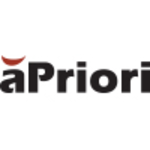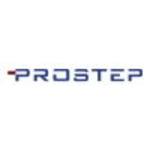Description

aPriori

ENOVIA
Comprehensive Overview: aPriori vs ENOVIA
aPriori and ENOVIA serve different roles within the product lifecycle management (PLM) and manufacturing spaces, with distinct capabilities and target markets.
a) Primary Functions and Target Markets:
aPriori:
- Primary Functions: aPriori is focused on product cost management, providing solutions for real-time cost analysis and insights during the design and manufacturing phases. It helps businesses understand the cost implications of their design choices and manufacturing processes, enabling cost optimization before production.
- Target Markets: It mainly targets industries that are sensitive to production costs, such as automotive, aerospace, industrial equipment, electronics, and consumer products. Manufacturing companies aiming to maximize cost efficiency during the product development process are key users.
ENOVIA:
- Primary Functions: ENOVIA is a PLM software developed by Dassault Systèmes. It provides collaborative product development capabilities, enabling teams to manage complex product data and development processes across multiple locations. Key functionalities include document management, BOM management, change management, and project management.
- Target Markets: ENOVIA’s target market includes industries like aerospace and defense, automotive, high-tech, industrial equipment, life sciences, and consumer goods. It is particularly suited for large enterprises that require extensive collaboration and data management across global teams.
b) Market Share and User Base:
-
Market Share and User Base for aPriori: As a specialized tool for cost management, aPriori tends to have a more niche market compared to comprehensive PLM solutions. Its user base is primarily engineering and manufacturing firms that prioritize cost analysis in their product development cycle. Market data specific to aPriori's share may not be as broadly reported as larger PLM systems.
-
Market Share and User Base for ENOVIA: ENOVIA, as part of Dassault Systèmes' suite of PLM solutions, enjoys a substantial share of the PLM market. It has a large and diverse user base characterized by major global corporations across multiple industries. ENOVIA is known for its integration with other Dassault Systèmes products such as CATIA and SIMULIA, enhancing its appeal to a wide range of engineering and design functions.
c) Key Differentiating Factors:
-
Focus and Specialization:
- aPriori is specialized in cost management, providing detailed cost models and analytics. Its value lies in its ability to deliver real-time cost predictions, which can drive more cost-effective design and manufacturing decisions.
- ENOVIA offers a broader PLM solution that encompasses all aspects of product lifecycle management, including collaboration, compliance, and project management, beyond just cost analysis.
-
Integration and Collaboration:
- aPriori integrates with CAD and ERP systems to provide cost analysis but doesn’t offer the extensive collaboration features that PLM systems like ENOVIA do.
- ENOVIA excels in collaborative product development, with a strong emphasis on data management and collaboration across global teams, and is deeply integrated with other Dassault Systèmes tools.
-
User Base Needs:
- aPriori is best suited for companies where cost control is a primary concern and who need predictive cost analysis integrated into their design process.
- ENOVIA is chosen by organizations that require comprehensive PLM capabilities to manage complex projects and facilitate cross-functional-team collaboration.
In summary, aPriori and ENOVIA serve different purposes: aPriori is highly specialized in cost management within the product development phase, while ENOVIA provides broad PLM capabilities for managing and collaborating on complex product lifecycle processes across various industries.
Contact Info

Year founded :
2007
Not Available
Not Available
Ukraine
Not Available

Year founded :
Not Available
Not Available
Not Available
France
http://www.linkedin.com/company/enovia
Feature Similarity Breakdown: aPriori, ENOVIA
aPriori and ENOVIA are both software solutions used in the product lifecycle and manufacturing sectors, but they cater to slightly different needs within that space. Here’s a breakdown of their feature similarities and differences:
a) Core Features in Common
- Product Lifecycle Management (PLM): Both systems offer PLM capabilities, providing tools to manage a product's lifecycle from conception through design and manufacturing.
- Collaboration Tools: They enable teams across different departments and locations to collaborate by sharing information and updates in real-time, which is critical in product development processes.
- Data Management: Both systems provide robust data management tools, allowing users to handle large volumes of product data efficiently.
- Integration Capabilities: They offer integration with other enterprise systems, such as ERP and CAD, to ensure seamless data flow and process integration.
- Cost Management: Each solution includes tools for cost analysis and management, although this is a core focus for aPriori.
b) User Interface Comparison
- aPriori Interface: aPriori emphasizes ease of use with a focus on providing detailed cost analysis at various stages of the product lifecycle. Its interface is designed to help users visualize cost drivers quickly and make informed decisions.
- ENOVIA Interface: ENOVIA, part of Dassault Systèmes' broader suite, offers a more integrated interface that covers various aspects of PLM. It is known for its flexibility and depth, also allowing for visualization, but the complexity can be higher due to its wide range of tools and functionalities.
c) Unique Features
- aPriori:
- Costing and Manufacturing Simulation: aPriori stands out with its advanced cost analysis tools and manufacturing simulation capabilities. It provides real-time insights into the cost implications of design decisions, which can significantly aid in making design-to-cost decisions.
- Design for Manufacturability (DFM) Analysis: Its ability to perform DFM analysis is designed to optimize product designs for manufacturing efficiency and cost-effectiveness.
- ENOVIA:
- Comprehensive PLM Suite: ENOVIA offers a broader range of PLM functionalities beyond cost analysis, such as project management, compliance management, and innovation management.
- Integration with Dassault Systèmes Tools: As part of the 3DEXPERIENCE platform, ENOVIA benefits from seamless integration with other Dassault Systèmes products like CATIA and SIMULIA, offering comprehensive design and simulation capabilities.
In summary, while both aPriori and ENOVIA offer overlapping PLM functionalities, aPriori is heavily focused on cost management and manufacturing analysis, while ENOVIA provides a more extensive suite of PLM tools suitable for managing more complex or multi-faceted product development processes.
Features

Not Available

Not Available
Best Fit Use Cases: aPriori, ENOVIA
aPriori and ENOVIA are both powerful tools that serve different purposes in the product lifecycle management (PLM) space, catering to different aspects of manufacturing, design, and product development. Here’s a breakdown of their best fit use cases:
a) aPriori
aPriori is best suited for:
-
Manufacturing Companies: Especially those that are heavily reliant on cost management during the product design and manufacturing process. It provides real-time cost assessments to guide design decisions.
-
Product Design Teams: Companies that are looking to integrate cost estimation early into the design process to avoid costly design choices later in production. aPriori helps align design goals with budgetary constraints.
-
Complex Manufacturing Projects: Projects that involve intricate manufacturing processes where cost control is crucial in maintaining competitiveness and profitability.
-
Industries with Stringent Cost Controls: Industries like automotive, aerospace, industrial equipment, and electronics that require precise cost calculations to manage low margins and high competition.
b) ENOVIA
ENOVIA is preferred for:
-
Enterprises Requiring Robust Collaboration: Businesses that need enhanced cross-functional collaboration across design, engineering, manufacturing, and business units. ENOVIA facilitates collaborative innovation across the product lifecycle.
-
Complex Product Lifecycles: Organizations dealing with complex, multi-year product development cycles require detailed project management and process control capabilities to manage data and changes over time.
-
Industries Focused on Compliance and Standardization: Sectors like aerospace and defense, healthcare, and energy, where strict regulatory compliance and adherence to standards are crucial. ENOVIA offers strong compliance management tools.
-
Large-Scale Enterprises: Particularly those with global teams needing seamless integration between different engineering and business systems. ENOVIA supports large-scale enterprise operations with its extensive PLM capabilities.
d) Industry Verticals and Company Sizes
-
aPriori caters primarily to mid-to-large manufacturing businesses focused on cost efficiency, primarily in industries like automotive, aerospace, electronics, and heavy machinery. Its primary function is in cost optimization, making it more suitable for manufacturing-heavy sectors.
-
ENOVIA supports broader industry verticals beyond manufacturing, such as life sciences, consumer packaged goods, and high-tech sectors. It caters to various company sizes but is especially beneficial for large enterprises that require sophisticated PLM capabilities and cross-departmental data management.
Both products offer distinct advantages depending on the specific needs of an organization—whether that be cost management and manufacturing efficiency through aPriori, or comprehensive lifecycle management and collaboration via ENOVIA.
Pricing

Pricing Not Available

Pricing Not Available
Metrics History
Metrics History
Comparing undefined across companies
Conclusion & Final Verdict: aPriori vs ENOVIA
Concluding on aPriori vs. ENOVIA requires a nuanced understanding of the unique features, capabilities, and contexts in which each product shines. Both are powerful tools in their respective domains: aPriori is known for its cost management and product optimization capabilities, while ENOVIA excels in collaborative product lifecycle management. Here's a breakdown of their relative value and strategic fit:
a) Best Overall Value:
Best Overall Value: The determination of the best overall value between aPriori and ENOVIA depends significantly on the company's specific needs.
-
aPriori offers the best value for companies focused on cost management and manufacturing process efficiencies. It's ideal for organizations looking to optimize product design and control manufacturing costs.
-
ENOVIA presents superior value for businesses prioritizing collaboration in product lifecycle management (PLM) and requiring extensive integration capabilities with other Dassault Systèmes tools.
b) Pros and Cons:
aPriori:
-
Pros:
- Cost Management: Provides powerful cost estimation and analysis tools, delivering insights into product design to reduce costs without compromising quality.
- Manufacturing Process Optimization: Helps identify more cost-effective manufacturing processes and materials.
- Integration: Can integrate with various CAD systems, enhancing its utility as a cost management tool.
-
Cons:
- Specialized Focus: Primarily limited to cost estimation and manufacturing, which may not meet broader PLM needs.
- Learning Curve: Users might face a steep learning curve to fully leverage its capabilities.
ENOVIA:
-
Pros:
- Comprehensive PLM Capabilities: Features extensive tools for managing every aspect of the product lifecycle.
- Collaboration Tools: Facilitates better cross-departmental collaboration, essential for global teams.
- Integration with Dassault Systèmes Suite: Seamlessly integrates with other software from Dassault Systèmes for a comprehensive digital design solution.
-
Cons:
- Complexity and Cost: Can be expensive and complex to implement, particularly for smaller enterprises.
- Customization Needs: Often requires significant customization to fully fit an organization’s specific workflows.
c) Recommendations:
-
Assess Business Needs: Companies should start by evaluating their core requirements. If cost reduction and manufacturing efficiencies are paramount, aPriori is more suitable. For holistic PLM and collaboration needs, ENOVIA should be prioritized.
-
Budget and Resources: Consider the budget and resources available for implementation and operation. ENOVIA's extensive capabilities come with higher costs and may require dedicated IT support.
-
Scalability and Integration: For firms already using Dassault Systèmes products, integrating ENOVIA could be advantageous. Meanwhile, aPriori is beneficial when used alongside existing CAD tools without the need for full PLM capabilities.
-
Pilot Testing: Conduct pilot studies with both solutions, if possible, to better understand their usability and impact on your specific processes.
-
Long-Term Strategy: Align the choice with long-term business objectives, considering future scalability and adaptability.
Add to compare
Add similar companies



